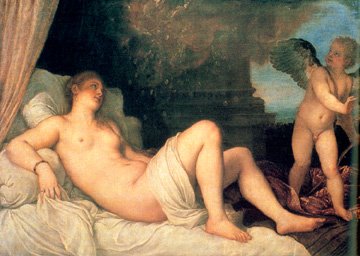Double puzzle of Ahe’ey. A Response to Ahe’ey – Womanhood
This is the response to:
https://steemit.com/writing/@jamielefay/ahe-ey-womanhood-an-original-novel-part-10
Since I started to read Ahe’ey this is a first real puzzle that I came across. I refer to this artistic protuberance on the smooth body of the novel plot. First of all the external one - I don’t understand its purpose in the novel. My first suspicion was that the author wanted to show that Morgan’ is cultured and that Gabriel is rich and well bred. But come on, I had several discussions with the author. She is not that … that forward. Perhaps it was done for marketing purpose. To mind comes the movie “Amadeus” when Mozart was expressing his frustration with the Viennese public that could not appreciate “Marriage of Figaro.”
“What is there not to like?” he asked Salieri.
“My dear Mozart, you’ve overestimated our dear Viennese. You didn’t even give them a good bang at the end of each song so that’d know when to clap.”
So this was done to give the audience the local equivalent of this “bang.”
Suppose so. But there’s got to be some additional level of planning here. A hook for the future of a sort. If for instance both characters would rob the Met, or attempted to figure out some deep and dark secrets like in the infamous “Da Vinci code.” No. Nothing like this seems to be in the queue.
One might say, well Morgan’s got to do something all this time, before the big event for which she arrived in New York. So why not fill in the pause with her going to the Met and showcase her and Gabriel’s additional virtues? That’s all nice and dandy, but if we just filling in the void, Morgan, I am sure, was doing a bunch of other stuff at this time as well. She probably read some literature, getting ready for her important engagement, ordered sushi in her room from a nearby restaurant, went to the gym, talked on the phone with her relative in Europe, watch some porn with her vibrator. Just kidding. Morgan is not that kind of a girl. She’s too classy for that. If she’d use a vibrator she’d think about Gabriel’s deep blue eyes. Wink, wink...
Yet, the author did not discuss any of this stuff but concentrated on their Met meeting and not even one but two times. Surely, in the later chapter they had a party at the Met, but there was absolutely no connection of any sort between the party and their adventures in the Met’s dungeons.
And here is the internal puzzle. Let’s take a closer read at these lines…
He asked why Danaë was her favourite, given her small passive role
in the original Greek mythology—seduced by Zeus, who visited her in the form
of golden rain. She paused for a second, contemplating his question.
“Her vulnerability and sensuality, her perfectly imperfect body and sexual awakening,
her cheeks touched by passion,” she said, and as she looked into his eyes, she lowered
her own and blushed.
Notice, the question is quite obscure and referred to both the mythological encounter and the picture. We can infer this from Morgan’s answer. Specifically from her words “Imperfectly perfect body.” The legend gives no specific indications about Danaë’s body. Morgan surely refers to the painting.
However, the topic of Danae and Zeus was a very common in the history of painting and many artists referred to this topic in their work. For example, this is the famous painting by Giovanni Battista Tiepolo

and this one is by Titian.

Each of these paintings displays its shares of vulnerability, sensuality, sexual awakening, etc. So the reason why Morgan liked symbolic painter Klimt was a different one.
Symbolism emerged from the philosophy of Immanuel Kant, who believed that human beings could only perceive natural phenomenon with their senses, while the true nature of objects is incomprehensible. Thus, symbol comes to the rescue to a troubled mind and allows an artist to express comprehensible meaning born by their imagination.
Therefore, symbolism sets itself apart from realism by generalizing forms and lines, and by rhythmically placing large colored surfaces, separated from each other by thick contour lines. If anything, this makes a painting less psychological and more decorative. In Klimt’s case, it allowed him to experiment with colors and make their coexistence much more extravagant than the way colors would appear in reality. The color distribution in Danae & Zeus painting much more indigenous to the learned mythological events, formed in one’s mind, than to the way those events could have happened if they were real. The photons of light are enlarged many million times from their actual size. Actually, their magnification factor is irrelevant since each particle represents light as a symbol.
I cannot get inside of Morgan’s head, but I would imagine that her particular liking of this painting has something to do with this simplified symbolic representation of the mythological scene, its decorative effect, and the triumph of intoxicating colors.
Gabriel, the artistic patron that he was, I am sure knew all this rudimentary information that I picked up via a superficial Google search. Thus, I don’t understand why his question was so obscure as if he already knew how to stimulate Morgan’s answer in line with the ideology that she is so obsessed with. It was as if he really had the advanced knowledge of how she wanted to answer the same way as he knew that she’d want to eat fruits when he drove her from the airport to the hotel.
So I am all anticipation to read further chapters. Way to go Jamie le fay!

Hi gals and guys,
If you would like to check out my remote corner of Steemit Universe, here are the links to my original short stories:
How I froze an unknowing memory